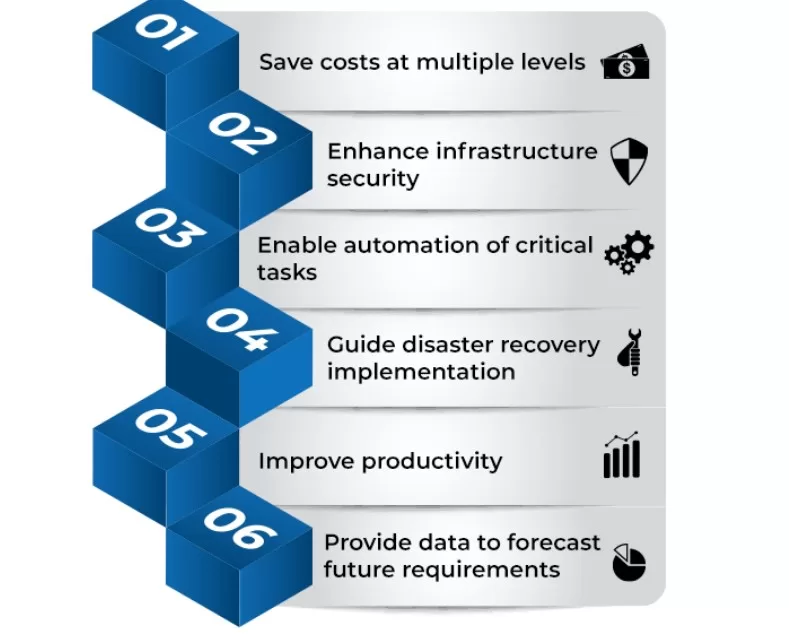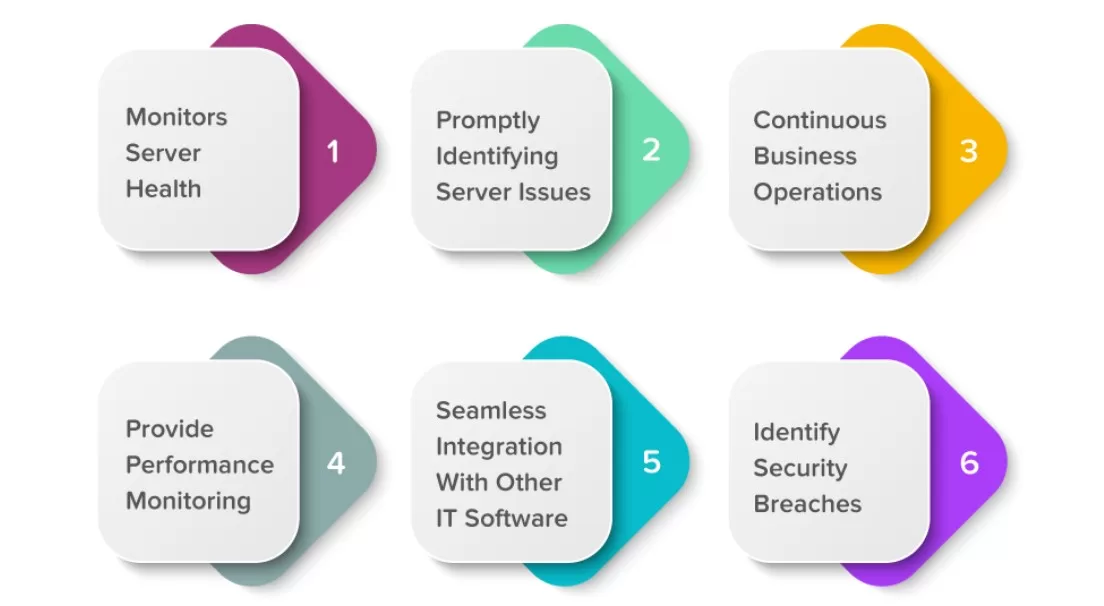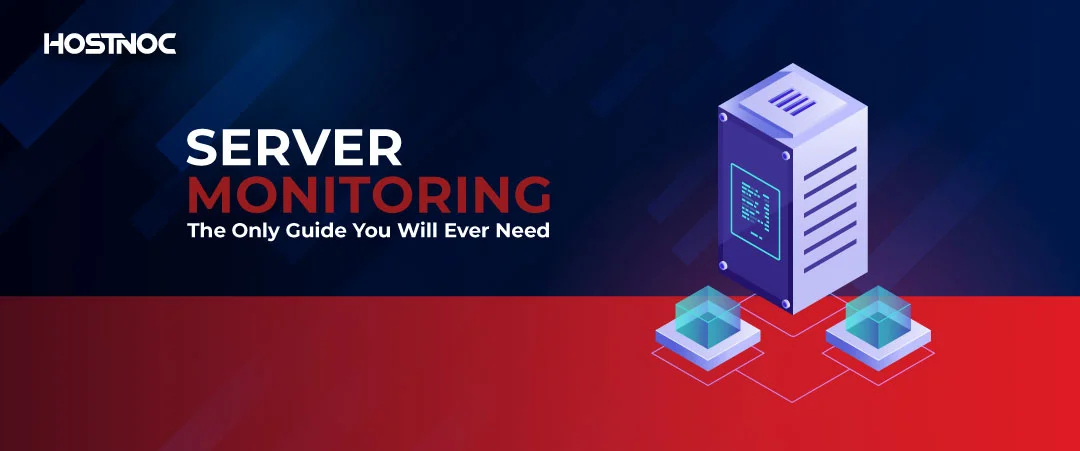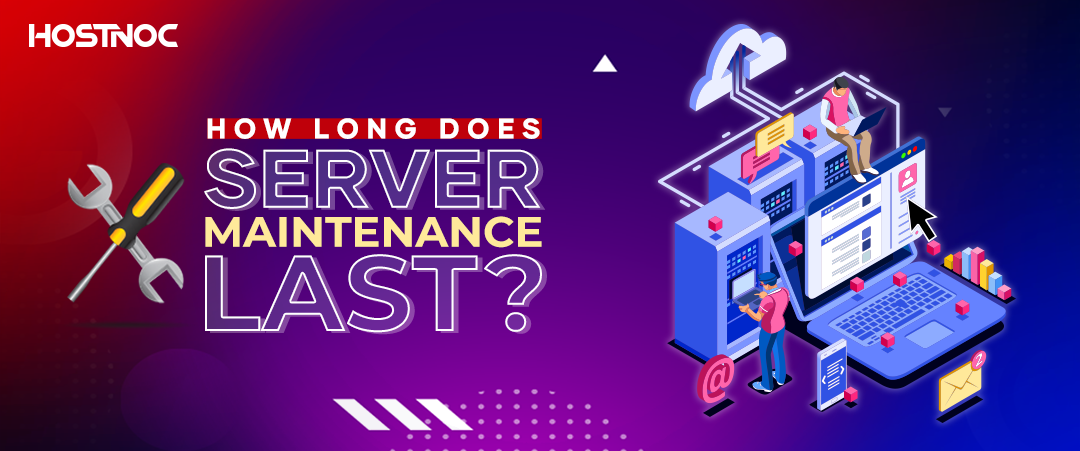Blogs

7 Key Takeaways From Cloud Detection and Response Survey Report 2023
July 19, 2023
Top 10 Cloud Security Challenges, According To SUSE Survey
August 10, 2023In the dynamic digital landscape of today, server monitoring is a critical aspect of managing online assets. Whether you run a small website or manage a complex network infrastructure, staying on top of server performance and health is vital to ensure smooth operations and exceptional user experiences. This comprehensive guide will explore the importance of server monitoring and highlight the top tools available to help you keep a close eye on your servers.
- Ultimate Guide To Server Monitoring
- What is Server Monitoring?
- Why is Server Monitoring Important?
- 1. Improved Uptime:
- 2. Performance Optimization:
- 3. Enhanced Security:
- 4. Predictive Maintenance:
- 5. Better Resource Allocation:
- Which Is The Best Server Monitoring Tools?
- 1. Nagios: Open Source Scalability and Versatility
- 2. Datadog: Real-Time Visibility for Modern Cloud Environments
- 3. Prometheus: Unleashing the Power of Time-Series Data
- 4. SolarWinds Server & Application Monitor (SAM): Application Monitoring Made Easy
- How To Choose The Right Server Management Tool?
- What are the Best Practices for Effective Server Monitoring?
- 1. Define Clear Objectives:
- 2. Set Realistic Thresholds:
- 3. Monitor Resource Utilization:
- 4. Monitor Application Performance:
- 5. Regularly Review Logs:
- 6. Implement Redundancy and Failover Mechanisms:
- Conclusion
Ultimate Guide To Server Monitoring
What is Server Monitoring?
Server monitoring is the process of overseeing and evaluating the performance, health, and availability of computer servers, whether physical or virtual. It involves collecting data on resource usage, performance metrics, service availability, error logs, and security auditing.
The primary goal is to ensure that servers operate optimally, identifying issues promptly to prevent downtime and optimize resource allocation. By using monitoring tools, administrators can proactively address problems, enhance system reliability, and improve server performance, ensuring smooth and efficient operations for hosting websites, applications, and critical service.
Why is Server Monitoring Important?
Server monitoring is the process of observing and analyzing server resources, applications, and network connectivity to detect and resolve issues proactively. By continuously tracking server metrics and performance, businesses can achieve the following benefits:
1. Improved Uptime:
Downtime can have severe repercussions, leading to revenue loss and damaged reputation. Server monitoring helps identify potential problems before they escalate, ensuring optimal uptime.
2. Performance Optimization:
Monitoring tools provide valuable insights into server performance, enabling you to identify bottlenecks and optimize configurations to enhance overall speed and responsiveness.
3. Enhanced Security:
By monitoring server logs and access attempts, you can quickly detect and respond to potential security threats, safeguarding your sensitive data.

4. Predictive Maintenance:
Regular monitoring allows you to predict hardware failures, enabling timely replacements and minimizing unexpected disruptions.
5. Better Resource Allocation:
Understanding server usage patterns assists in allocating resources efficiently, reducing operational costs.
Which Is The Best Server Monitoring Tools?
Server monitoring can be performed through various tools and software, either built-in tools provided by the operating system or specialized monitoring applications. These tools can generate alerts or notifications when certain thresholds are exceeded, allowing administrators to take action before problems escalate
1. Nagios: Open Source Scalability and Versatility
Nagios is a popular open-source tool renowned for its versatility and extensibility. It can monitor servers, applications, services, and network devices effectively. With a vast plugin ecosystem, Nagios can be customized to meet specific monitoring needs.
2. Datadog: Real-Time Visibility for Modern Cloud Environments
As a cloud-based monitoring platform, Datadog takes center stage in modern cloud-centric environments. With its real-time monitoring capabilities, Datadog provides unparalleled visibility into server metrics, applications, and services. What sets Datadog apart is its seamless integration with popular technologies, making it a top choice for businesses leveraging cloud-based resources. The platform’s ability to monitor and analyze complex cloud infrastructures ensures efficient performance management and prompt issue identification.
3. Prometheus: Unleashing the Power of Time-Series Data
Prometheus emerges as a dominant open-source monitoring system, tailor-made for time-series data collection and analysis. This versatile platform excels in monitoring servers and applications, particularly in containerized environments. Prometheus’s powerful query language enables users to extract valuable insights from vast amounts of time-series data efficiently. Additionally, its robust alerting capabilities ensure timely notifications for critical incidents, empowering IT teams to proactively address potential problems.
4. SolarWinds Server & Application Monitor (SAM): Application Monitoring Made Easy
SolarWinds Server and Application Monitoring is a comprehensive commercial tool offering in-depth monitoring for servers, applications, and cloud-based services. It comes with pre-built templates and alerts to simplify setup and ensure quick deployment.

How To Choose The Right Server Management Tool?
Selecting the ideal monitoring solution depends on an organization’s unique requirements and infrastructure setup. Zabbix, with its all-encompassing monitoring capabilities, is an excellent option for those seeking an open-source, customizable solution. Datadog proves invaluable for businesses heavily reliant on cloud technologies, thanks to its real-time visibility and seamless integrations. Meanwhile, Prometheus suits containerized environments, where precise time-series data analysis and powerful alerting are paramount.
Server monitoring landscape offers a trio of impressive solutions in Zabbix, Datadog, and Prometheus. Each platform caters to distinct needs, allowing businesses to make informed decisions and optimize their operations in this data-driven era.
What are the Best Practices for Effective Server Monitoring?
Here are some of the best practices for effective server monitoring.
1. Define Clear Objectives:
Determine the key performance indicators (KPIs) that matter most to your business. Tailor your monitoring strategy to focus on these metrics.
2. Set Realistic Thresholds:
Establish appropriate threshold levels for alerts to avoid unnecessary notifications while ensuring critical issues are promptly addressed.
3. Monitor Resource Utilization:
Keep track of CPU, memory, disk space, and network usage to identify potential resource constraints.
4. Monitor Application Performance:
Monitor application response times and transaction rates to ensure optimal user experiences.
5. Regularly Review Logs:
Analyze server logs for error messages and anomalies that may indicate underlying issues.
6. Implement Redundancy and Failover Mechanisms:
Plan for server failures by implementing redundancy and failover mechanisms to ensure high availability.
Conclusion
Efficient server monitoring is indispensable for businesses and IT teams aiming to deliver consistent, reliable, and high-performing services to their users. By leveraging the right monitoring tools and adhering to best practices, you can detect and resolve issues proactively, optimize performance, and ensure smooth server operations. Stay ahead of the curve, and let server monitoring be the cornerstone of your digital success.
Did this article help you in understanding server monitoring? Share it with us in the comments section below.
Shared hosting is a crowded party — get a dedicated server and host the event yourself!
Cores
RAM
Storage
Location
Monthly Price
Link
8 vCPU Cores
16 GB RAM
2.4 TB SSD
600 Mbit/s Port
$35.75 /month
Buy Now
10 vCPU Cores
26 GB RAM
3.2 TB SSD
1 Gbit/s Port
$50.65 /month
Buy Now
Featured Post
How Long Does Server Maintenance Last?
Table of Contents What is Server Maintenance? Why Does It Need Regular Maintenance? Factors Affecting the Duration of Server Maintenance last 1. Scope of the Maintenance […]
Server Hardening: 10 Steps Checklist For Server Security
Server hardening is the process of securing a server by reducing its surface of vulnerability. A hardened server is resistant to attack as its potential vulnerabilities […]
Unturned Server Hosting: How to Host and Play with Friends
Table of Contents How to Play with Friends in Unturned? 1. Using Steam Friends 2. Creating a LAN Party 3. Using a Hostnoc Dedicated Server How […]





